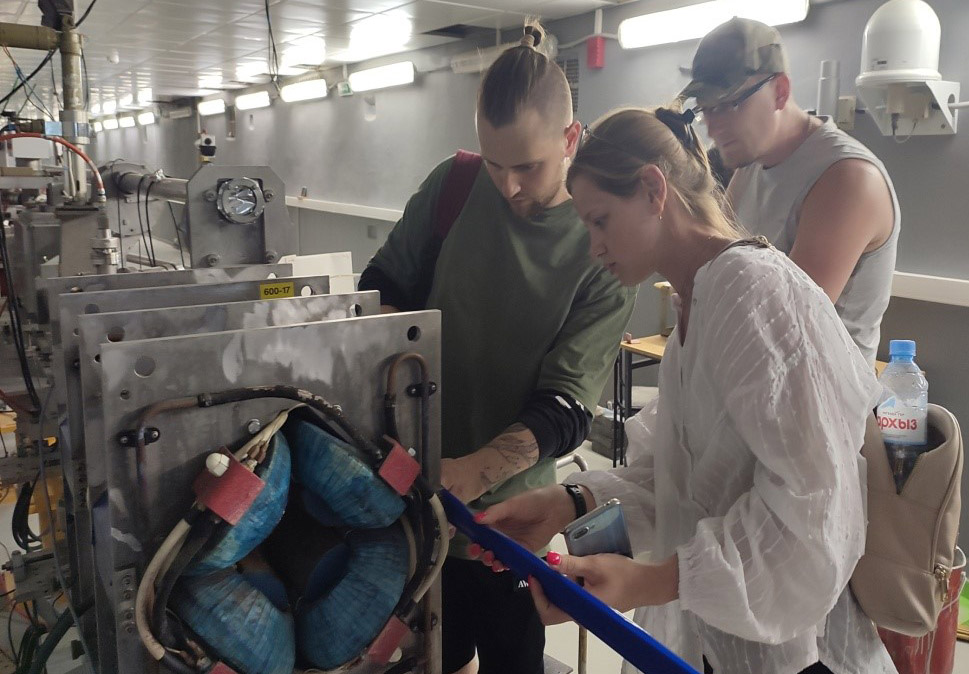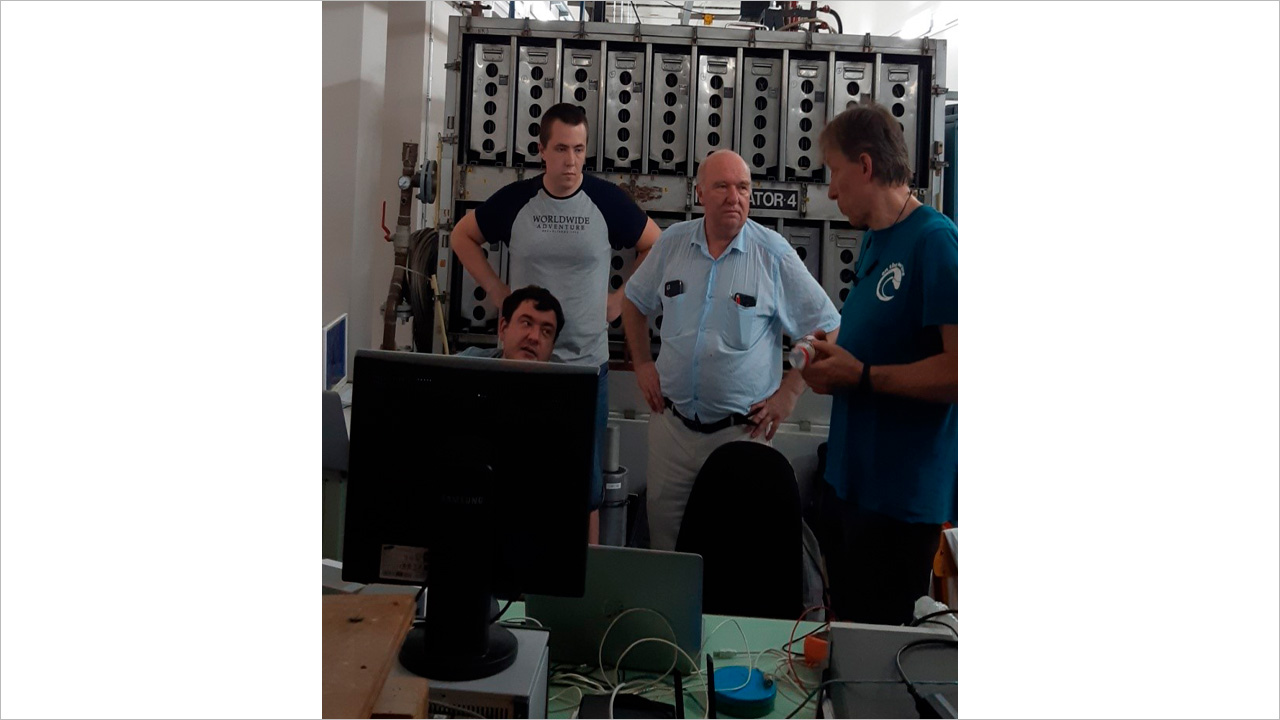JINR in FLAP collaboration
News, 12 January 2023
The Joint Institute is an active participant of the young international collaboration FLAP (Fundamental & Applied Linear Accelerator Physics collaboration), established for the unique JINR facility – linear electron accelerator LINAC-200. The aim of this association is the cooperation in the field of fundamental and applied physics of linear accelerators. The collaboration has wide opportunities for teaching young people who can participate in real scientific tasks.
The past year has been quite fruitful for the new collaboration. Representatives of the collaboration Anton Baldin, Head of the Department of Theoretical and Methodological support of VBLHEP JINR projects, Alexander Kubankin, a leading researcher at LPI, and Alexander Potylitsyn, Professor at Tomsk Polytechnic University (TPU), told about the establishment, work, and important results of FLAP.
The collaboration includes Russian institutes and universities, research centres of the CIS countries, and representatives of individual centres in the UK, Japan, Chile. “In this association of physicists and engineers of numerous scientific and educational centres, a new concept of cooperation was successfully implemented – combining the efforts of scientific groups, representing various organizations to solve certain tasks together,” Anton Baldin pointed out. At JINR, the LINAC-200 Linear Electron Accelerator, which is being put into operation, became the “gathering place” of this collaboration. This is a unique electron accelerator capable of generating electron beams with different energies in the range from 26 to 200 MeV. In the future, it is planned to increase the available electron energy to 2 GeV. The high attractiveness of this facility for scientific groups both in Russia and other countries has led to the formation of the FLAP scientific cooperation.
The FLAP collaboration is aimed at applied as well as fundamental research. “In a broad sense, the tasks of this collaboration could be described as the search for new mechanisms and the study of the fundamentals of the processes of interaction of accelerated electron beams with matter and external fields. These studies are interesting both for the development of new science-intensive devices and instruments, and for solving fundamental issues of modern physics, for example, the search for “Higgs-like” particles (X17) in the mass range of about dozens of MeV,” Anton Baldin said.
 Valery Kobets on LINAC-200 control panel
Valery Kobets on LINAC-200 control panel
LINAC-200 was created in 1973 – 1976 for the Dutch National Institute for Subatomic Physics (NIKHEF) as part of a synchrotron facility. In the late 1990s, the University of Amsterdam moved all experimental research to CERN. In 1999, by agreement of heads of two institutes in Amsterdam and Dubna the accelerator was dismantled and transported to JINR, where the group under Valery Kobets leadership successfully undertook its “revival”. “Currently, the accelerator is under commissioning. We can expect that in 2023 LINAC-200 will become a full-fledged JINR basic facility of a great interest,” the speaker emphasised.
In 2022, as part of the FLAP collaboration, experimental groups of researchers from JINR, NRU “BelSU” (Belgorod), LPI (Moscow), VNIIEF (Sarov), TPU (Tomsk) successfully worked on the LINAC-200 Electron Accelerator in the commissioning mode.
 Work of experimental groups from JINR, MSU, LPI, VNIIEF, TPU during commissioning at LINAC-200
Work of experimental groups from JINR, MSU, LPI, VNIIEF, TPU during commissioning at LINAC-200
The FLAP collaboration also implements an educational programme in the fields of accelerator physics, elementary particle and radiation detectors, radiation materials science, and generation of terahertz radiation.
The unique capabilities of the accelerator allow testing of all types of particle detectors for the NICA Collider under construction. Thus, the following works have already been started:
- investigation of impulse loading of detectors based on microchannel plates;
- investigation of the MAPS-detectors (Monolithic Active Pixel Sensors) for the MPD experiment;
- investigation of characteristics and calibration of the electromagnetic calorimeter prototype for SPD and FCAL;
- investigation of characteristics of the SPD straw tracker;
- investigation of characteristics of gas detectors.
Along with applied research, the FLAP collaboration aims to study the generation and specific properties of various radiations during the interaction of relativistic electrons with matter. These are Cherenkov diffraction radiation, transition and terahertz radiation. Special attention should be paid to the possibility of creating neutron sources with energies up to 20 MeV generated by short (up to 20 nanoseconds) electron pulses. Such sources are necessary for the development and calibration of trackers, in particular, for the SHINE project on applied research in the field of nuclear energy at the NICA Accelerator Complex.
The NRU BelSU group led by Alexander Kubankin, Head of the Radiation Physics Laboratory at NRU BelSU and a leading researcher at LPI, highly evaluates the capabilities of LINAC-200 for conducting fundamental and applied work in the field of ionizing radiation. “Several large-scale centres based on charged particle accelerators are currently under construction in Russia. The issue of training personnel and testing the unique equipment is rising, which is a significant problem. There is an acute shortage in infrastructure where it would be possible to fill these gaps at the required high level. The FLAP collaboration is one of the few associations of specialists aimed at solving modern fundamental and applied problems in the field of interaction of accelerated particle beams with matter. In particular, the development and testing of new diagnostic systems for beams of modern accelerators. The collaboration includes quite a lot of young people, and the number of those willing to take part in such an interesting work is growing,” Alexander Kubankin explains.
In December, a group of employees and students of Tomsk Polytechnic University tested the equipment they created for the diagnosis and monitoring of the electron beam as part of the commissioning work at LINAC-200.
“We have developed a precision methodology for diagnosing electron beams of accelerators and started testing it at the MAMIB microtron (Mainz, Germany). Unfortunately, it was not possible to complete the tests, so we are grateful to the JINR administration for the permission to test the methodology during the commissioning of the LINAC-200 Accelerator. The developed methodology makes it possible to measure the transverse size of the electron beam and its angular divergence with an accuracy better than 5 milliradians within one adjustment,” Professor Alexander Potylitsyn, Head of the TPU Beam Diagnostics Group, said.
 TPU students undergo summer internship at LINAC-200
TPU students undergo summer internship at LINAC-200
The Heads of the RFNC VNIIEF also expressed sincere gratitude to the JINR Directorate and leaders for their support of the first trial experiments with LINAC-200 accelerator beams and for the opportunity to experimentally test neutron measurement methodologies in the accelerator commissioning mode. Measurements of the technical parameters of a neutron source obtained by irradiating various types of converters with an electron beam of the LINAC-200 accelerator performed in 2022 showed a real prospect of developing and creating a calibration stand for pulsed neutron measurement methodologies. Calibration of equipment with exemplary neutron radiation, which can be obtained using LINAC-200, is in demand not only by VNIIEF subdivisions, but also by other organizations, including participants of the FLAP collaboration. The leadership of VNIIEF expressed special gratitude to the coordinator of the FLAP collaboration Anton Baldin and the team of specialists headed by Valery Kobets who ensure the operation of the accelerator.
The scientific programme of the collaboration, which currently includes fundamental and applied research areas, is described in an article published in the journal Physics of Particles and Nuclei Letters, 2021, Vol. 18, No. 3, pp. 338–353.

